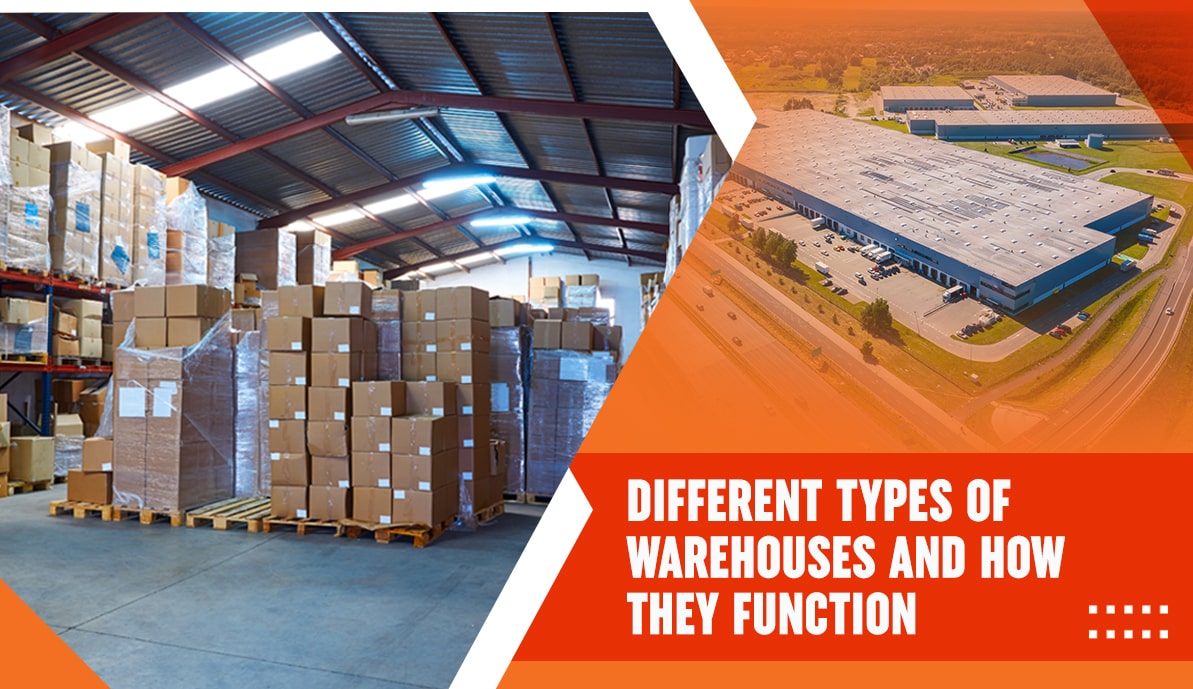Warehousing plays a pivotal role in the smooth operation of supply chains. Businesses depend on it to store, manage, and distribute goods efficiently. The structure, features, and functions of a warehouse differ depending on its type. From storing perishables to handling hazardous materials, modern warehouses have evolved to suit diverse industrial needs. Understanding these types helps manufacturers, retailers, and investors make smart decisions when it comes to logistics planning or investing in storage spaces.
Private Warehouses
Private warehouses are owned and operated by a single entity, often a manufacturer, a wholesaler, or a large retailer. These spaces are built to meet the unique logistics and storage needs of a company.
Functionality of Private Warehouses:
- Offer complete control over operations, layout, and inventory systems.
- Support long-term cost efficiency for companies with consistent, high-volume storage needs.
- Enable companies to customize security, automation, and racking systems.
- Designed to store specialized goods such as machinery, textiles, or construction materials.
- Often located near production units or business hubs to reduce transit time.
- Improve customer service by ensuring faster dispatch and fewer stockouts.
- Help businesses maintain exclusive access to storage, improving confidentiality and safety.
- Lower dependence on third-party storage reduces the risk of logistical errors.
- Suitable for seasonal businesses that require bulk storage in specific months.
Many growing companies in India are looking to buy warehouse in Kolkata to gain greater operational autonomy.
Public Warehouses
Public warehouses are owned by the government or private entities and made available for rent to businesses. They are an excellent solution for companies with short-term or flexible storage needs.
Functionality of Public Warehouses:
- Provide accessible storage space for small and medium enterprises.
- Charge rent based on space occupied and duration of storage.
- Offer services like inventory tracking, packaging, and shipping support.
- Ideal for seasonal stock buildup or overflow during high-demand periods.
- Usually located near transport terminals or industrial zones for better access.
- Operate under standardized systems for better regulatory compliance.
- Come with professional staff and equipment to handle a variety of goods.
- Support businesses looking to expand operations without high capital investment
- Often act as distribution nodes for multi-channel sellers.
Businesses that deal with fluctuating inventory cycles often look for industrial property for sale to move from public warehousing to private ownership eventually.
Fulfillment Centers
Fulfillment centers serve eCommerce and retail businesses by handling storage, packing, and shipping of goods directly to consumers. They are critical for companies aiming for fast, last-mile delivery.
Functionality of Fulfillment Centers:
- Equipped with automation tools like conveyor belts, scanners, and robots.
- Handle large volumes of small shipments efficiently.
- Improve delivery speed and customer satisfaction.
- Reduce the need for in-house warehousing or dispatch teams.
- Operate 24/7 to process orders in real-time.
- Use integrated systems to manage online orders and inventory.
- Provide packaging and labeling services.
- Allow businesses to scale quickly during sales events or festive seasons.
- Maintain temperature and humidity control for sensitive products.
With growing eCommerce demand, businesses are keen to buy warehouse in Kolkata to build customized fulfillment spaces within the city’s logistic corridors.
Cold Storage Warehouses
Cold storage warehouses are designed to store perishable items like dairy, seafood, meat, frozen products, and pharmaceuticals. These warehouses maintain precise temperature and humidity levels.
Functionality of Cold Storage Warehouses:
- Maintain temperatures from -30°C to +10°C depending on product requirements.
- Use insulated panels and refrigeration units for effective cold management.
- Operate with backup power systems to ensure continuous preservation.
- Include separate zones for freezing, chilling, and ambient storage.
- Prevent spoilage, contamination, and loss of product integrity.
- Come equipped with monitoring systems for remote temperature tracking.
- Facilitate compliance with food and drug safety regulations.
- Used by food processors, restaurants, pharmaceutical distributors, and exporters.
- Often located near ports, food parks, or major distribution hubs.
The increasing need for perishable supply chains is pushing investors to seek industrial property for sale that supports cold storage conversions.
Distribution Centers
Distribution centers act as central hubs for receiving goods from suppliers and quickly dispatching them to retailers or customers. They are designed for rapid movement rather than long-term storage.
Functionality of Distribution Centers:
- Store products temporarily for 24 to 72 hours before dispatch.
- Positioned strategically near consumption centers or highways.
- Use real-time data for order routing and load balancing.
- Equipped with dock doors, conveyors, and sorting systems.
- Help minimize delivery timelines in B2B and B2C supply chains.
- Support bulk-breaking and cross-docking activities.
- Enable consolidated shipments to reduce transportation costs.
- Allow for scalable operations during peak demand periods.
- Operate as part of regional or national logistics networks.
Government Warehouses
Government warehouses are managed by public bodies like the Central Warehousing Corporation (CWC) or State Warehousing Corporations (SWCs). They store agricultural goods, essential commodities, and government stockpiles.
Functionality of Government Warehouses:
- Offer affordable storage space to farmers, traders, and cooperatives.
- Help prevent wastage and maintain food security.
- Follow strict norms for hygiene, moisture control, and ventilation.
- Facilitate collateral management and warehouse receipt financing.
- Used to store grains, fertilizers, pulses, sugar, and other essentials.
- Spread across rural and urban locations to support regional supply chains.
- Promote fair pricing and accessibility in agricultural markets.
- Include inspection and grading services for produce.
- Serve as reliable options during emergencies or market interventions.
Investors interested in long-term stability often consider industrial property for sale near such public storage clusters for allied services.
Hazmat Warehouses
Hazmat (Hazardous Materials) warehouses are specialized facilities that store flammable, explosive, toxic, or corrosive substances under strict safety regulations.
Functionality of Hazmat Warehouses:
- Comply with legal norms related to hazardous material storage.
- Built with fire-resistant walls, chemical-resistant flooring, and proper drainage. Include separate chambers for incompatible substances.
- Equipped with gas detection, ventilation, and fire suppression systems.
- Staff undergo training for emergency response and material handling.
- Serve industries like chemicals, oil & gas, paints, and batteries.
- Offer secure access control to prevent unauthorized entry. Located at safe distances from residential or sensitive zones.
- Inspected regularly for environmental and safety compliance.
With rising demand for safe industrial logistics, firms are choosing to buy warehouse in Kolkata that meet hazardous storage standards.
The Bottom Line
Warehouses are not just storage facilities. They are the beating heart of supply chains, shaping how products move, reach consumers, and create value. Each type plays a crucial role in making operations efficient and customer-centric. Understanding how they function helps businesses choose the right fit for their logistics strategies or investment goals.









